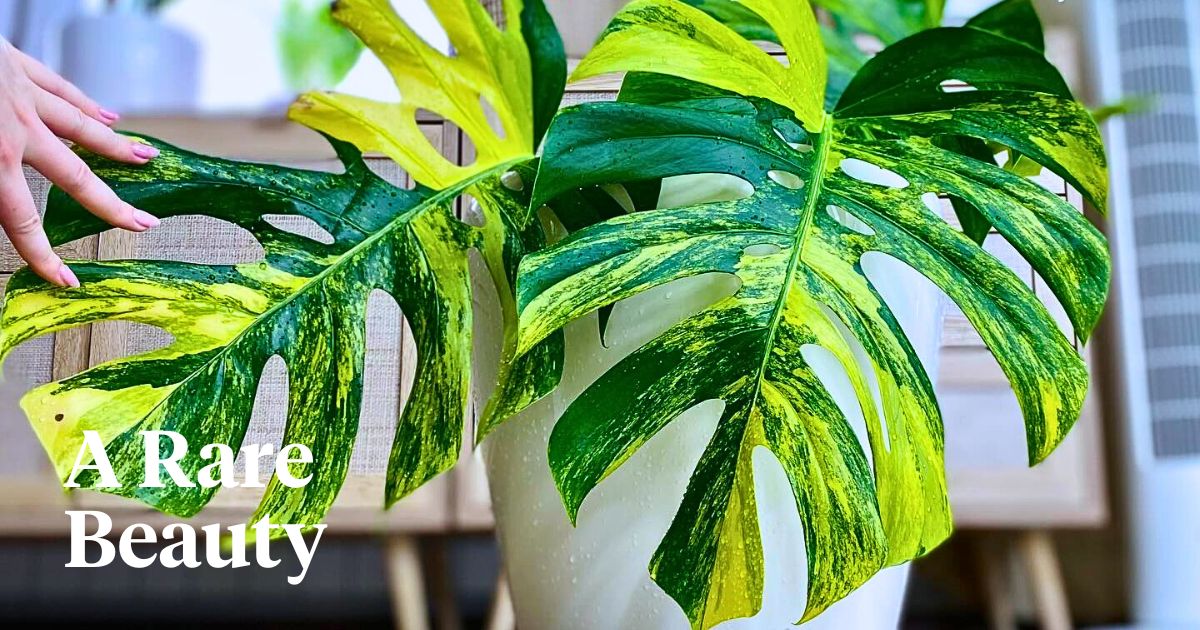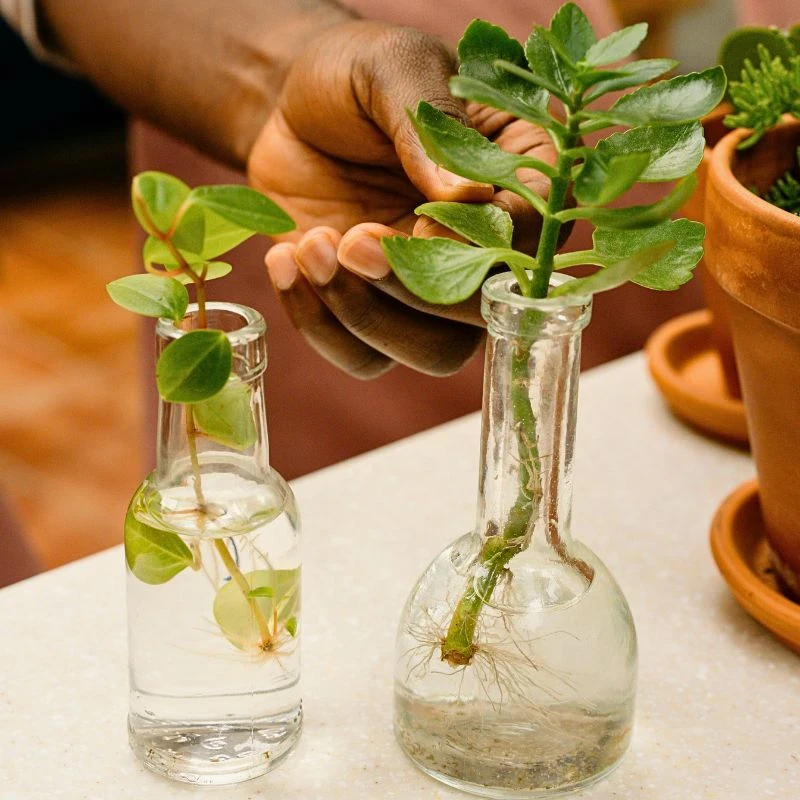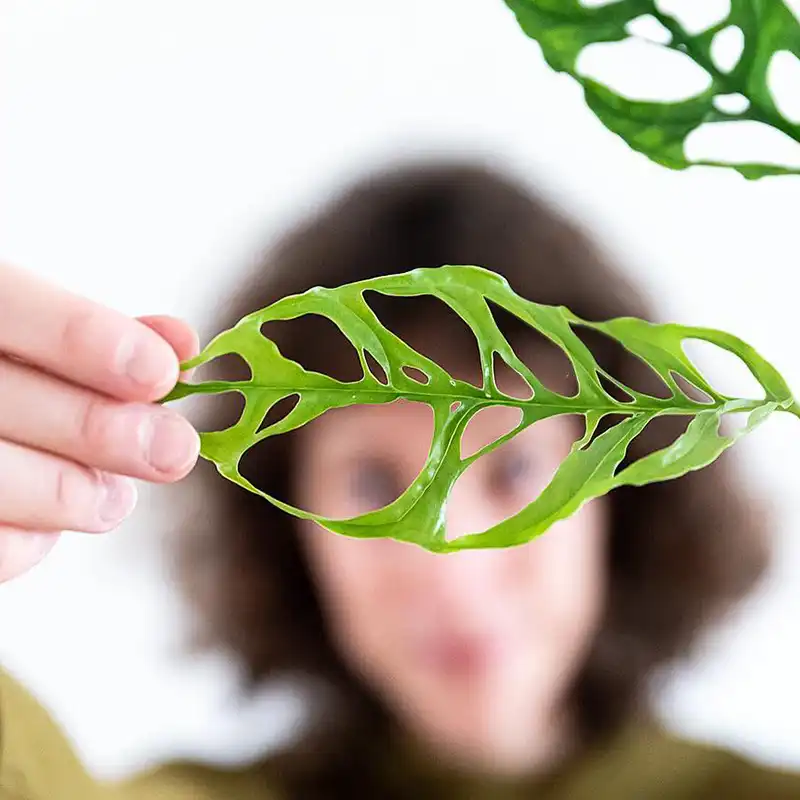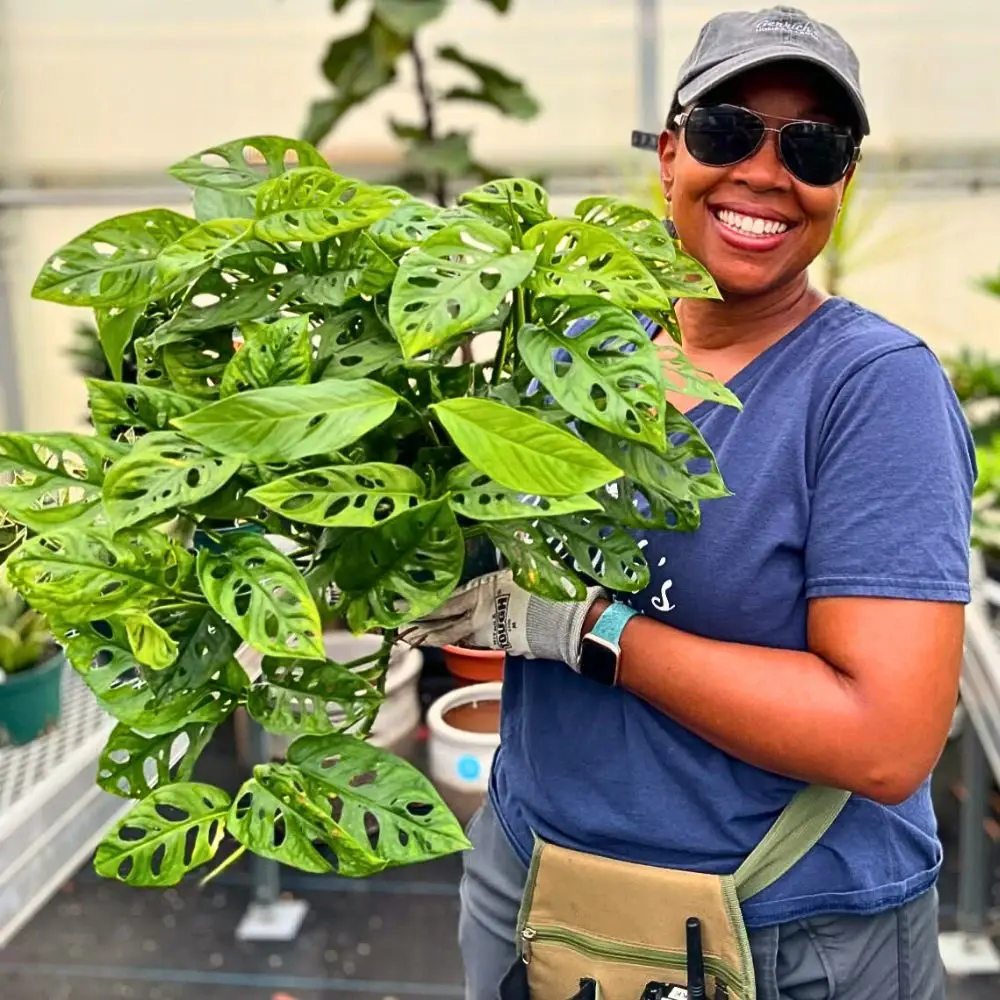Monstera Aurea, also known as Monstera Marmorata, is a variegated cultivar of the classic variegated Monstera deliciosa. It, basically, is a more stunning variety of the popular Monstera deliciosa plant. The lemon and lime, and dark-green variegation occur in a similar pattern to what you’d expect to find on Monstera Albo, with blocks and splashes of variegation and some leaves that are solidly half and half. This is also called the half-moon variegation. Its leaves are a glorious, devastatingly perfect split; one emerald green, the other a yellowish
The Monstera Aurea is considered a rare and highly sought-after plant among plant enthusiasts. This is because it is a naturally occurring mutation of the Monstera deliciosa, and the variegation can be unstable, making it challenging to propagate. It has heart-shaped leaves with beautiful, golden-yellow variegation. This variegation is what makes them even more striking.
Aesthetics of the Monstera Aurea Plant
This Monstera variety goes by several names. One can find the Monstera Aurea plant as any of the following:
- Monstera Marmorata;
- Monstera Aurea Variegata;
- Variegated Monstera Aurea;
- Monstera deliciosa Aurea.
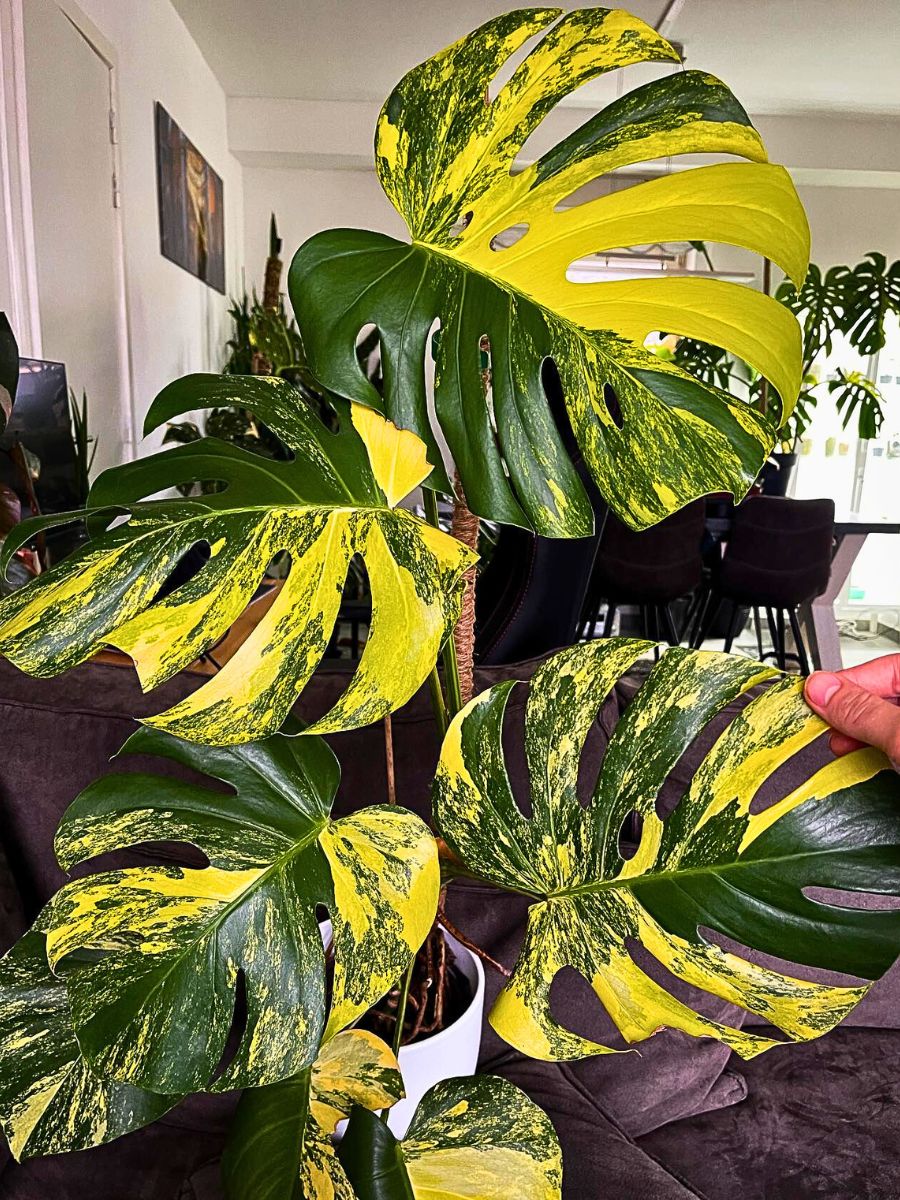
Photo by @naweeds_variegated_world
The plant’s most striking feature is its beautiful, golden-yellow variegation on its heart-shaped leaves. The variegation can vary in intensity and pattern, making each plant unique. The fact that it is rare, makes it highly sought-after, thus a prized addition to any plant collection. Its unique aesthetics, enhanced by its variegation therefore make it a versatile addition to a variety of interior design styles, ranging from modern to bohemian.
In addition to these qualities, compared to the regular Monstera deliciosa, Monstera deliciosa Aurea tends to grow a bit more compactly. Plus, it is an air-purifying houseplant, capable of removing toxins and pollutants from the air, such as formaldehyde and benzene.

Photo by @boysandgirlswithplants
Further to these, despite its exotic appearance, Monstera Aurea is relatively low-maintenance and easy to care for. It can, also, thrive in a range of lighting conditions, from low to bright light, although the variegation may be more pronounced in brighter light.
This fast-growing plant — especially when provided with bright light and regular fertilization — can, in addition, tolerate high humidity. It is, therefore, a great option for bathrooms, kitchens, or other areas with high moisture levels.
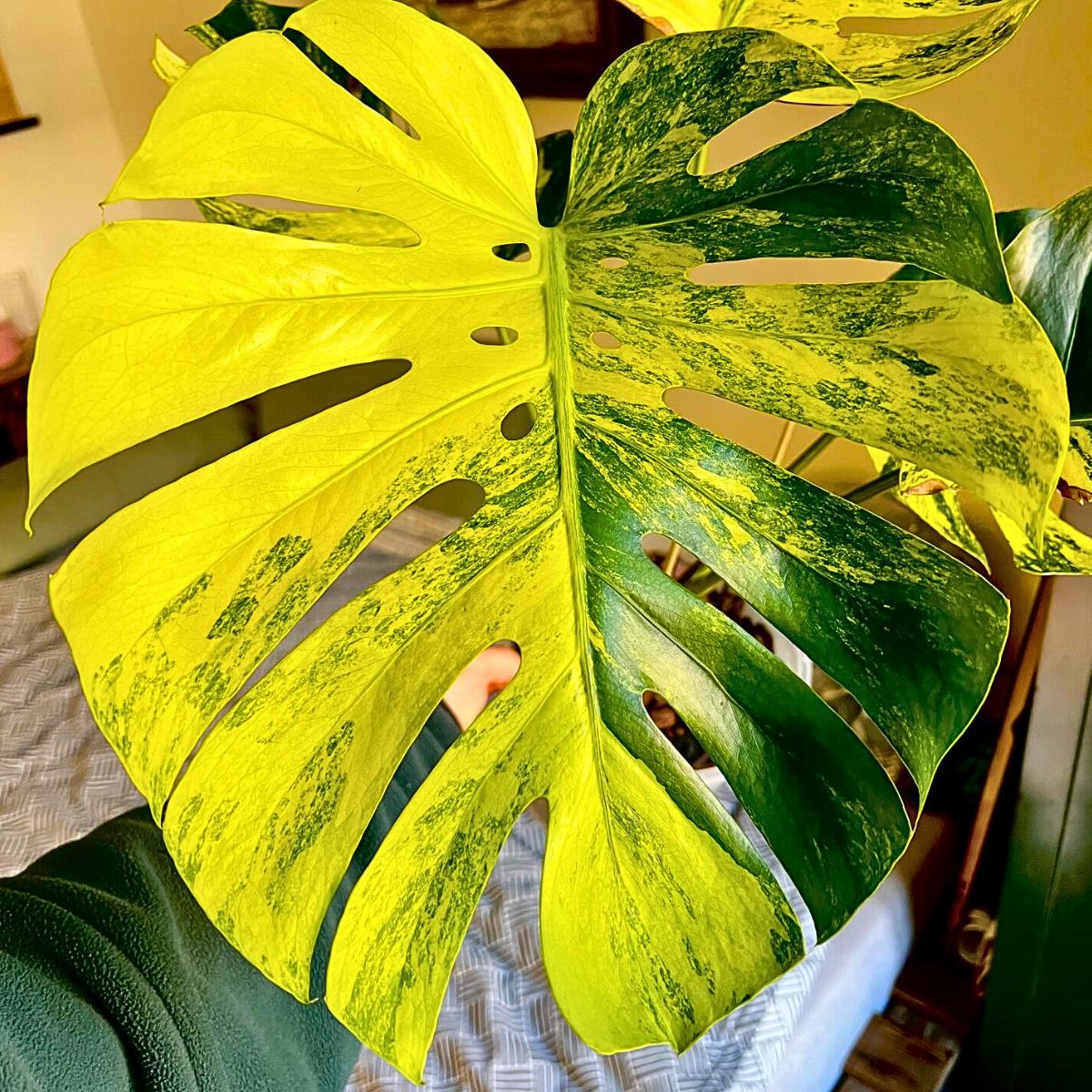
How to cultivate a Monstera Deliciosa Aurea Variegata?
You cannot cultivate a variegated Monstera Aurea since variegation is a spontaneous mutation that only happens in a few random plants. The Monstera houseplants that are variegated always begin their life from seed. Commercial growers of Monsteras purchase large amounts of seed and when they are lucky some of the seedlings sprout as variegated plants.
Most Monstera Aurea plants you find today are either from seed or are created from tissue cultures or cuttings of other variegated plants. So, it is unlikely that you will find Monstera Aurea seeds for sale, and even if you do, there is no guarantee that they will produce a Monstera Aurea with the same variegation.
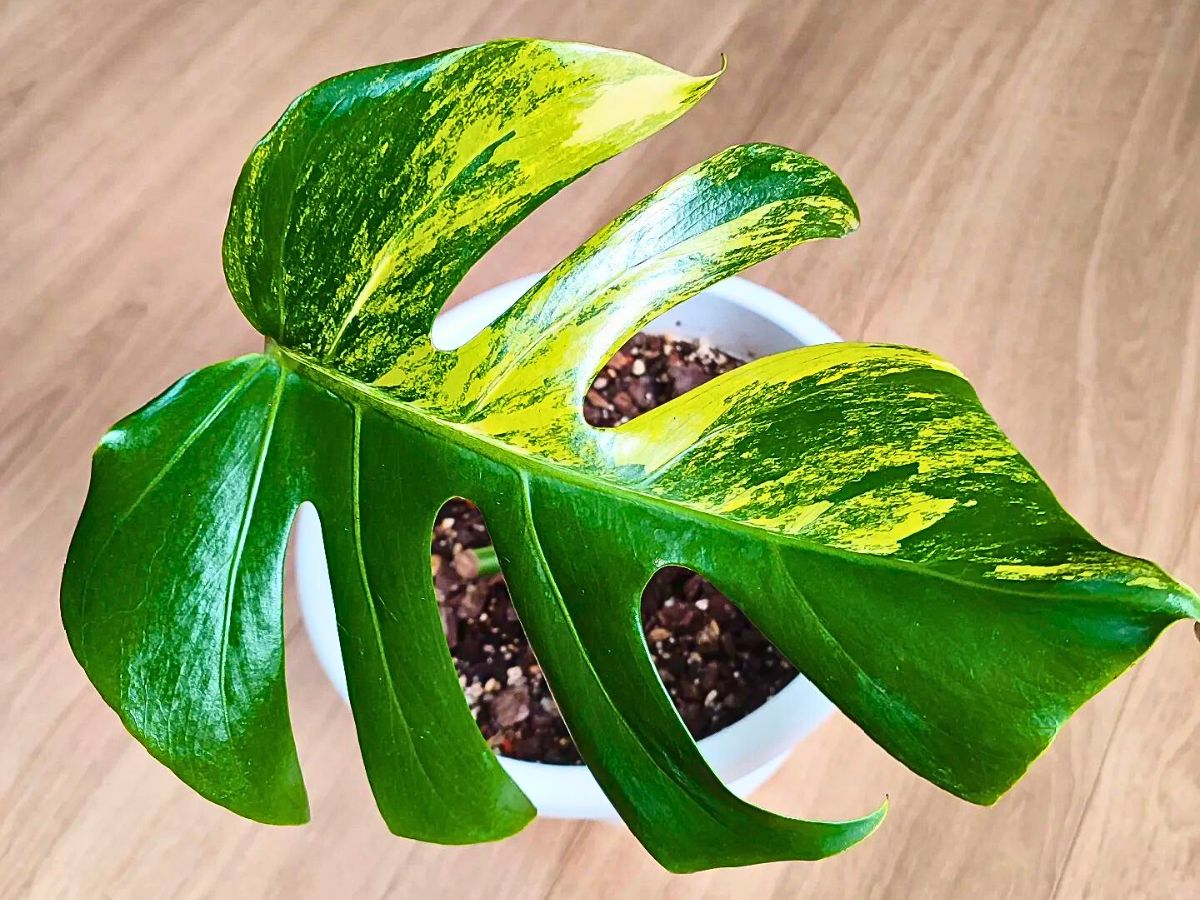
Although it is believed to root easier than other variegated Monstera varieties, and almost always continues to produce variegation on new leaves, you might succeed in growing this plant from a Monstera Aurea cutting.
How Rare Is Monstera Aurea?
Monstera Aurea is still quite rare and might be tricky to find online. Since the green houseplant trend started a few years ago, and prices for rare plants exploded, many people have started to offer cuttings on the internet, so you should be able to find them quite easily. Currently, they are harder to find than white-and-green variegated monsters, the Monstera Albo Variegata, but not as rare as the elusive Monstera obliqua.
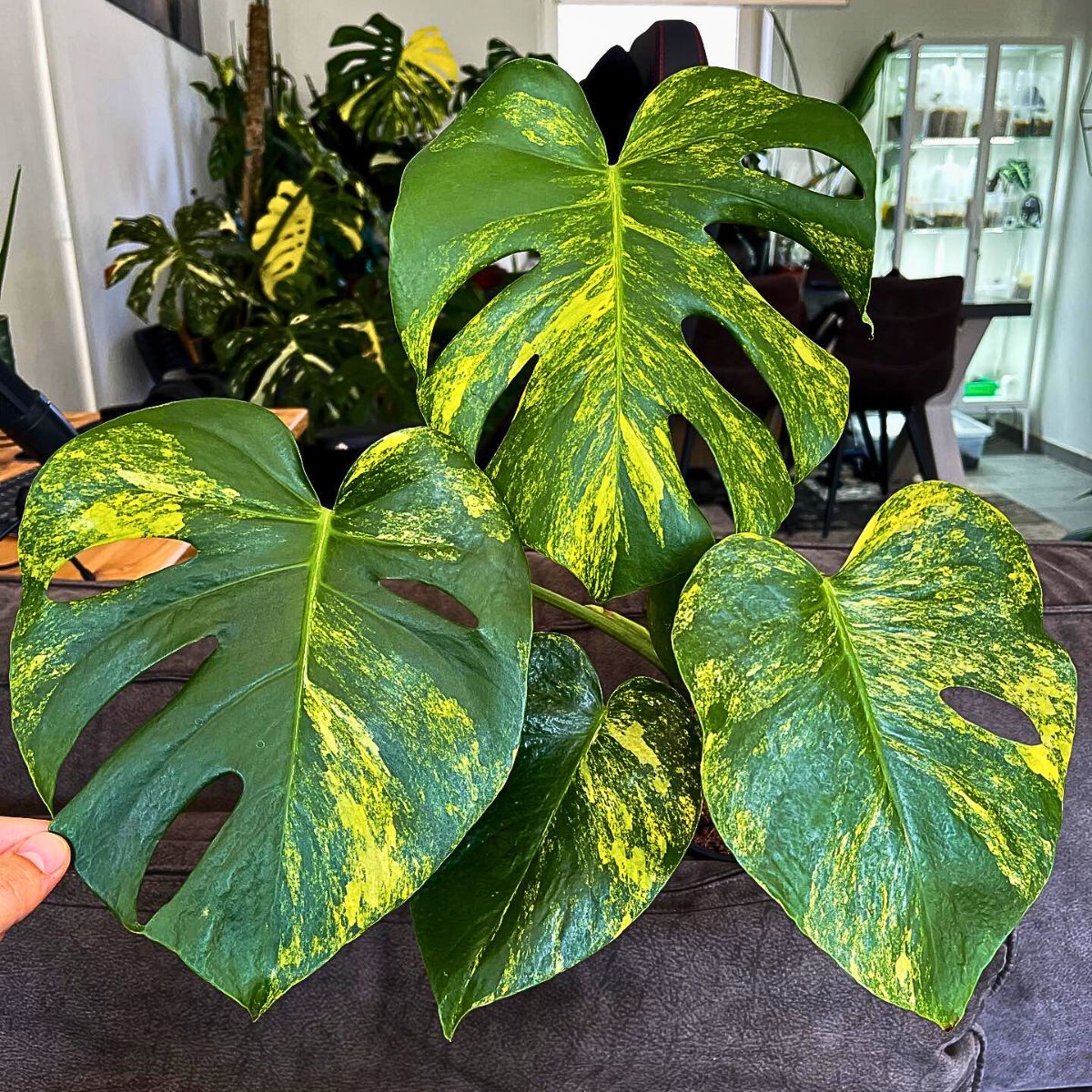
The good news is, when comparing Monstera Aurea vs Albo, the Monstera Variegata Aurea is much easier to propagate than the Albo. Most have the same success rate propagating Monstera Aurea as non-variegated Monsteras. The most popular approach to propagate is cuttings.
Wait until your plant is mature enough to multiply before taking Monstera Aurea cuttings. Although it may be tempting to begin propping right away, wait until you have a sufficient number of large, robust leaves and some strong nodes. Your plant needs to be established enough to recover rapidly before you run the danger of stunning it.
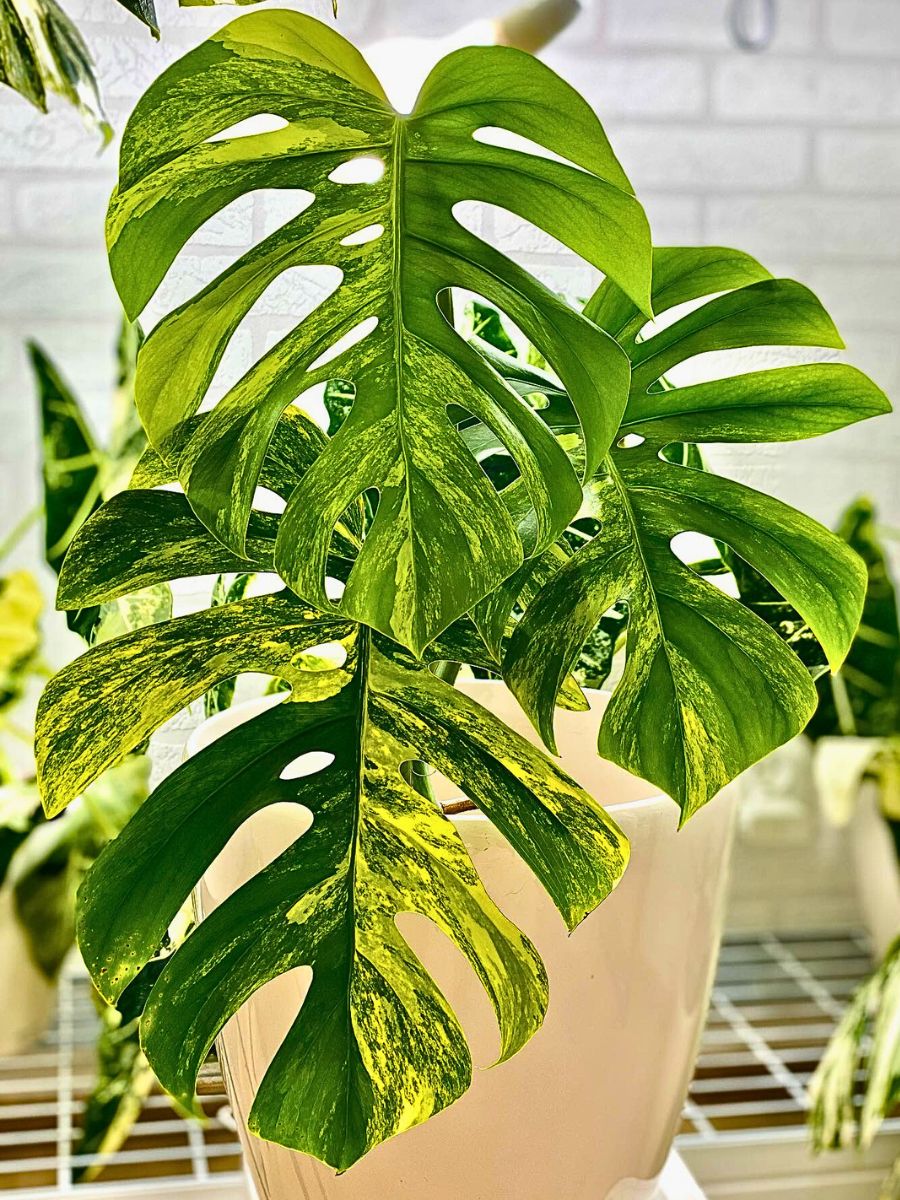
Photo by @kolekcjonerkazielonych
Doing this in the spring will allow you to benefit from the growth hormones that your plant is currently producing.
Find a part with at least one somewhat new, healthy leaf and a node before taking a cutting (this will look like a little bump on the stem opposite from a leaf). Cut beneath the node using sterile shears so that your cutting encompasses the node and at least one healthy leaf.
What Is the Price of a Monstera Aurea?
At the moment, prices range between $20 and $3,000, depending on plant size, number of leaves, and maturity. You can expect to pay at least $20 for a cutting, and up to several thousand dollars for a healthy, well-established Monstera Aurea plant with many leaves.
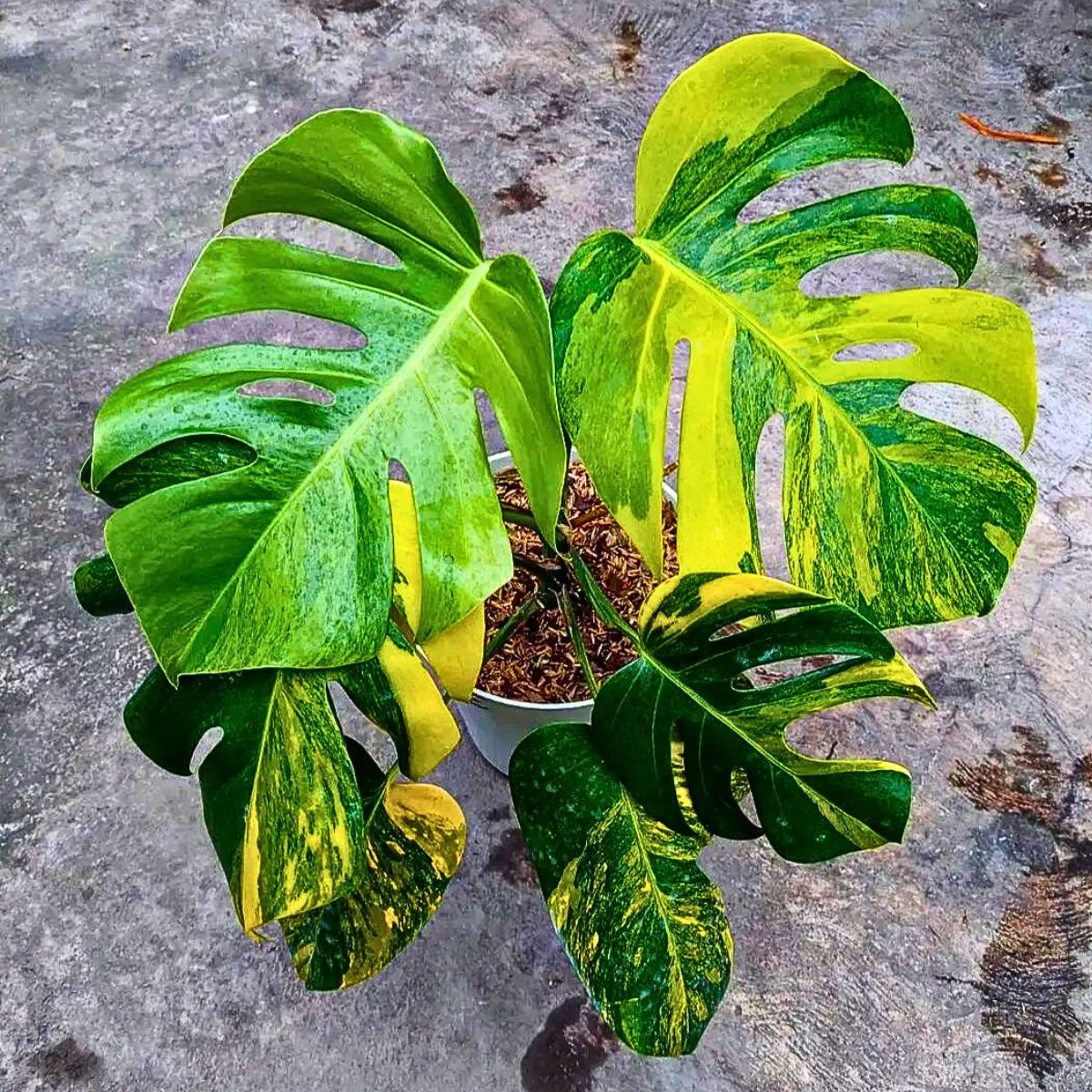
Monstera Aurea Care Guide
Variegated varieties are always a bit more challenging to care for than non-variegated varieties. Because they are mutants and have less chlorophyll in the leaves, they grow slower and need more light. They are a bit weaker in general. Still, they are compared to many other houseplants very easy to take care of and don't have pests quickly. Here's everything you need to know about caring for Monstera Aurea.
How Much Light Does Your Monstera Aurea (Marmorata) Need?
Monstera deliciosa Aurea Marmorata needs good exposure to bright natural light, morning sun, or grow lights. Lack of solar energy will cause your Monstera Aurea to develop more green areas to ramp up its photosynthesis. And we don't want that! The lack of chlorophyll in the leaves also means that the leaves will be more photosensitive and prone to scorching. Be careful of too much direct sunlight.

It's a strange plant, in nature most Monstera grow in the shade, and mutations with variegation are having a harder time surviving, which is also why they don't come around very often.
The Ideal Humidity for the Monstera Aurea
These are tropical plants that make their home in the rainforest, so they do best in fairly warm and humid conditions.
The ideal humidity level for Monstera deliciosa Aurea Variegata is around 65%-70%. If your room doesn't have sufficient humidity, adding a moss pole, potting your variegated Monstera Aurea in a larger pot, and grouping it with other aroids will improve humidity around the plants.
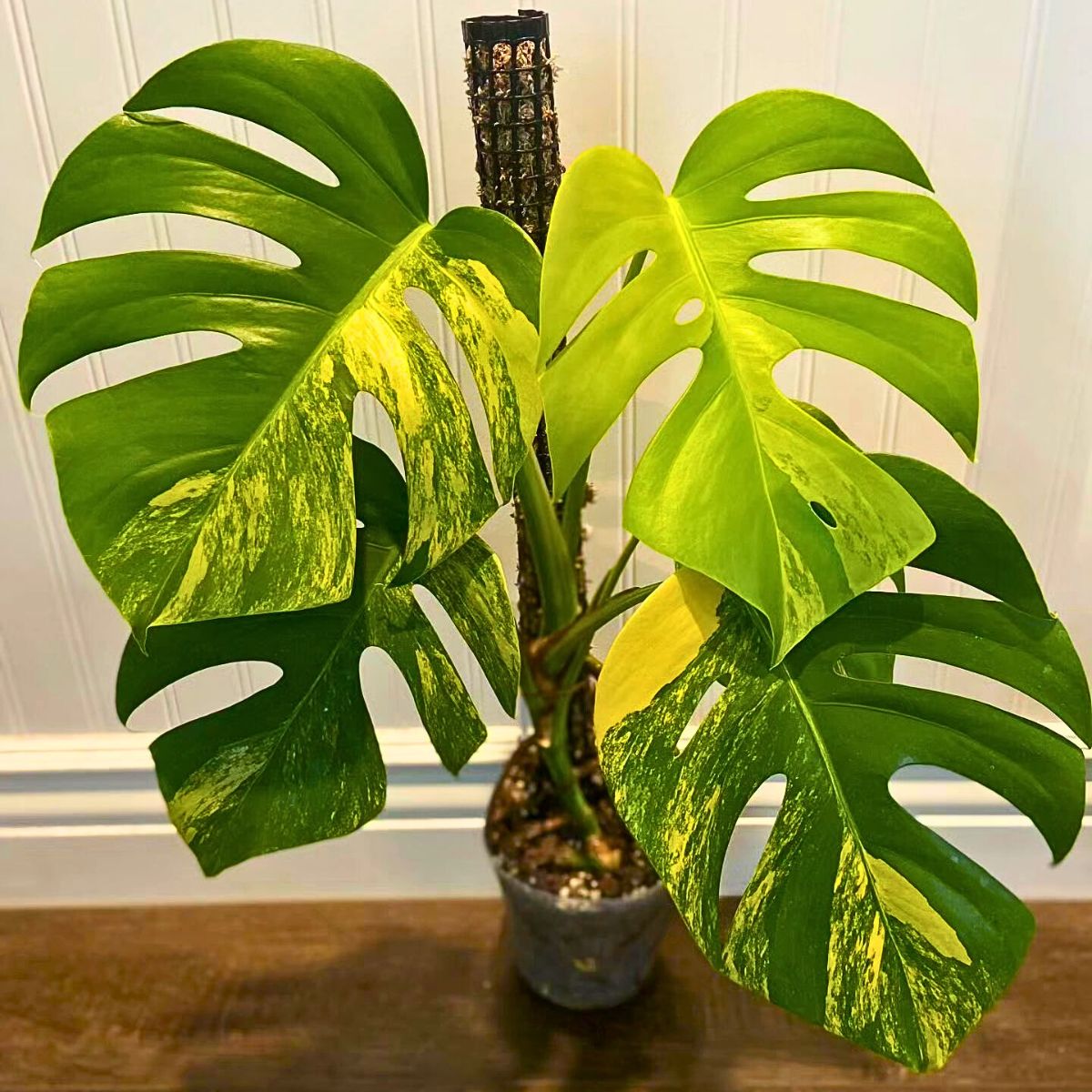
Watering Your Variegated Monstera Aurea
Monsteras are extremely sensitive to water, particularly specimens with rich variegation. Ensure the water drains fully and isn’t retained by the soil, and that the plant isn’t sitting in water. It's recommended to keep the Monstera Marmorata Aurea on the drier side, letting the top of the soil dry before watering it again.
Feeding Your Monstera Aurea
Fertilize Monstera Aurea Variegata in spring and summer. Make sure they don’t contain heavy salts like some cheaper fertilizers do. An N-P-K ratio of 5-2-3 is ideal for promoting the growth of healthy foliage and strong roots. In the wild, monstera plants get all the nutrients they need from the soil they’re rooted in, and even from the surfaces like barks from other trees they’re growing on.
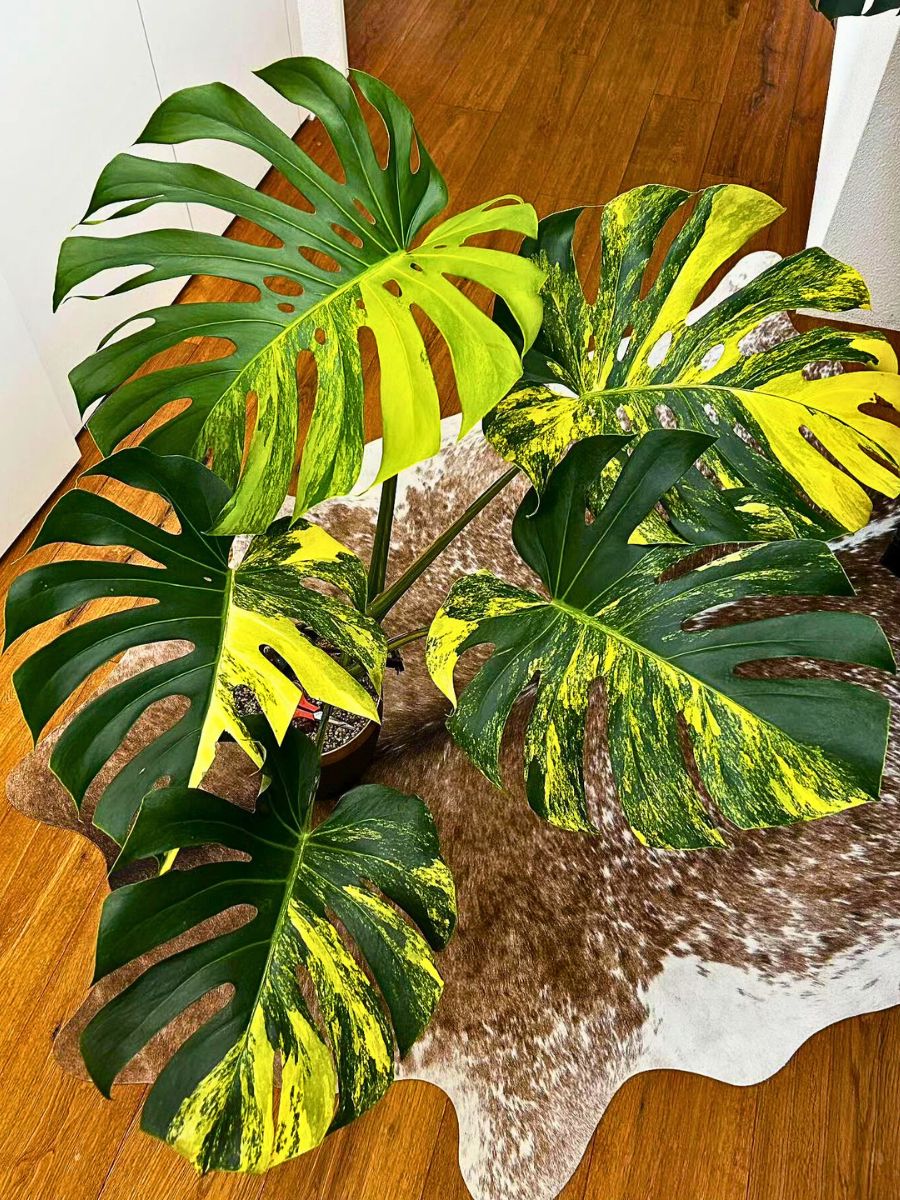
The nutrients that are currently present in the potting soil are the only ones accessible to your Monstera Marmorata, and a growing plant can easily use all of the nutrients within a few months. This implies that for your Monstera Aurea to continue to grow and perform at its best, you will need to add fertilizers to the soil.
Diseases and Pests
Thrips, spider mites, mealybugs, and scale are insects that can swiftly suck the juices out of your plant's leaves, so it's critical to take quick action if you see a problem. The best course of action is typically to use a kitchen sprayer, lint roller, or your fingers to remove as many insects as you can before spraying the plant with diluted neem oil, or an insecticide. To get rid of the bugs, you might need to repeat this process a few times over a few weeks.
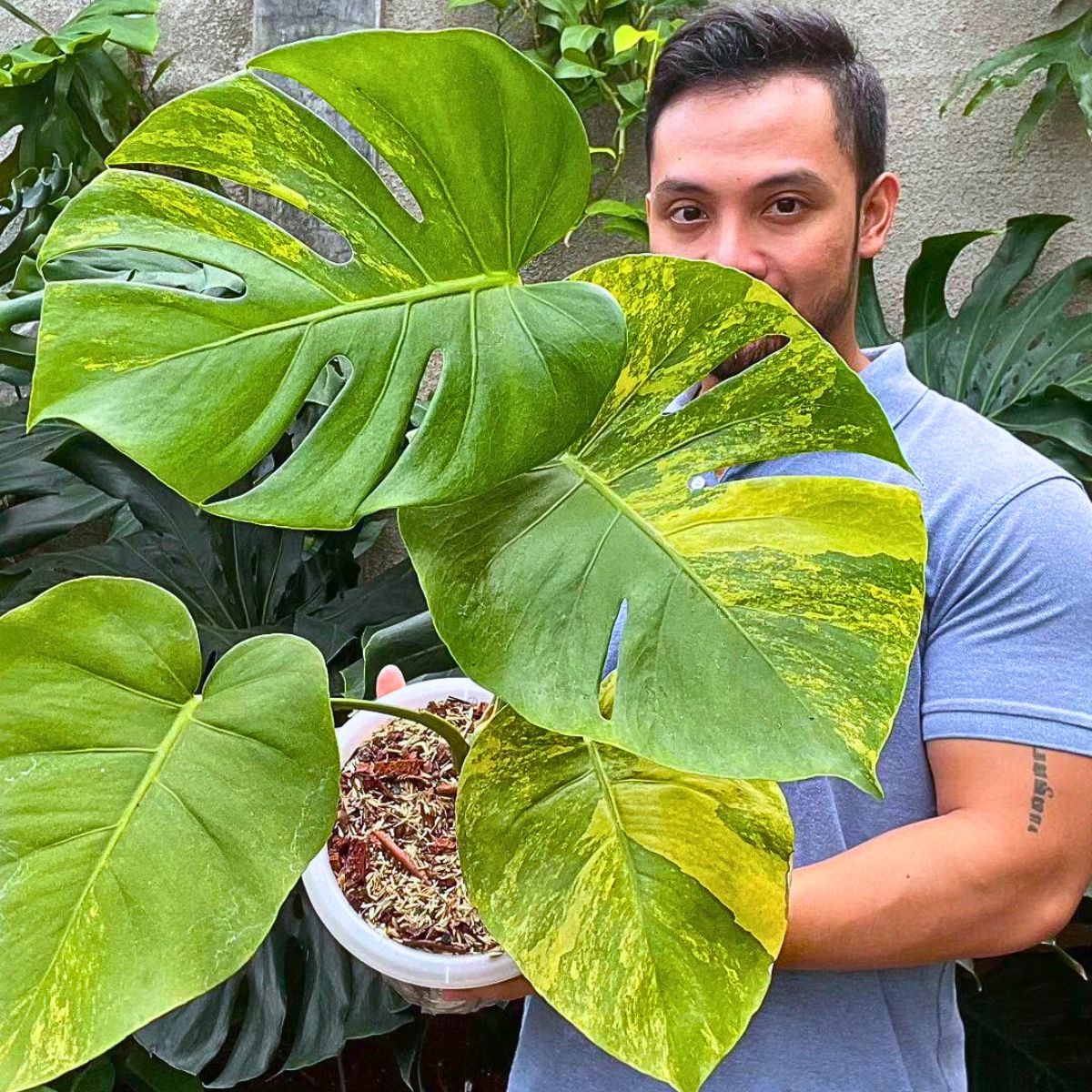
A stunning plant like Monstera Aurea can give your room a blast of distinctive color and charm. It's fairly easygoing and a must-have for any variegated monstera enthusiast as far as plants go.
Feature image by @wowmonstera, header image by @kolekcjonerkazielonych.

